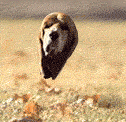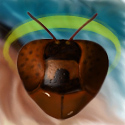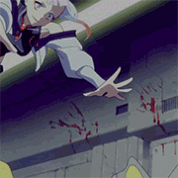|
NewFatMike posted:I used to do it in tiny increments, definitely go with larger ones. Coming back to this, I finally got around to a new print and futzed with the Z levels as mentioned here. That brim is now a solid flat piece of plastic and I couldn’t be more thrilled. I’m having a bit of a stringing issue (I think) so that will be the next bit to tackle. Thanks!
|
|
|
|

|
| # ? May 28, 2024 06:57 |
|
Catatron Prime posted:It might be your extruder itself... the one that comes with the E3 Pro etc is kinda poo poo, and the brass teeth wear out stupid fast. Before I gave my ender 3 pro away to a friend, I upgraded it with this extruder and it made a big difference: https://www.amazon.com/CHPOWER-Extruder-Upgraded-Replacement-Extruders/dp/B079JZ374W/ Yeah check that there's not a groove worn in the teeth, and also that there are no cracks in the spring arm or grooves worn around the filament input opening. All of those things can result in variation in extrusion.
|
|
|
|
armorer posted:Yeah check that there's not a groove worn in the teeth, and also that there are no cracks in the spring arm or grooves worn around the filament input opening. All of those things can result in variation in extrusion. I've already upgraded the extruder from the shipped one, at the advice of this thread. I just did a test cube and the walls are 0.38mm instead of 0.45, I hate this printer. I mean, now it's looking like a thermal issue. Which is weird, because it seems like the Prusa is also printing too hot. It was 12% humidity in town yesterday, like most days, so I'm pretty sure wet filament isn't the issue. Maybe this is some weird quirk about printing at 8000 feet above sea level?
|
|
|
|
Catatron Prime posted:It might be your extruder itself... the one that comes with the E3 Pro etc is kinda poo poo, and the brass teeth wear out stupid fast. Before I gave my ender 3 pro away to a friend, I upgraded it with this extruder and it made a big difference: https://www.amazon.com/CHPOWER-Extruder-Upgraded-Replacement-Extruders/dp/B079JZ374W/ I got one of these and put it on before I ever even tried to print anything and I never ran into any problems that were related to that part. Def recommend
|
|
|
|
cruft posted:I've already upgraded the extruder from the shipped one, at the advice of this thread. Someone previously linked this viddya earlier in the thread, but it may be helpful: https://m.youtube.com/watch?v=yzPqBt2SrcE&feature=youtu.be Tl;dr - There's a cumulative error effect from unconstrained filament as the printer lays it down. This can cause the adjacent line to be ever so slightly off as the filament gets pushed inwards by the solid outer wall. You can help fix this by setting the slicer to print outer walls first, so the excess bleeds inwards not out, but then that causes problems when printing overhangs because it's not supported yet. You may have an entirely separate issue though. I'm assuming you've already run a printer test object to identify issues? Eg: https://www.thingiverse.com/thing:2656594 A temperature tower might be helpful too--it prints each layer at a different temp to help you visually identify optimal print temp settings for a filament. Eg: https://www.thingiverse.com/thing:3329956 Apologies if you've already done all that... just going through my mental checklist. Let's see... have you considered performing an exorcism or blood sacrifice to appease the ender demons? https://adw.org/about-us/resources/request-an-exorcism/
|
|
|
|
I am wanting to get a 3rd printer primarily for printing 40k proxies, I'm thinking of getting the Saturn 3 ultra based on reading some guides and what not, i know I want resin (might get an FDM later) mainly just going to print the minis but I'd like to be able to do a platoon at a time, and it seems like this would allow that?
|
|
|
|
cruft posted:I've already upgraded the extruder from the shipped one, at the advice of this thread.
|
|
|
|
Bahahaha The new smooth PEI plate had a plastic protective sheet on it. I bet everything adheres better now that I've removed it! 
|
|
|
|
Catatron Prime posted:Someone previously linked this viddya earlier in the thread, but it may be helpful: https://m.youtube.com/watch?v=yzPqBt2SrcE&feature=youtu.be I'm not even that far ahead yet. Here's the queue currently:
My sister just announced she's divorcing her husband, so I don't even know who's going to get this thing if I ever fix it. I certainly don't want it taking up space in our 900ft^2 house, and I'm not sure I'm cruel enough to lay this at anybody else's feet. Maybe I'll try to sell it for peanuts on SA Mart to someone ITT. e: unchecking the filament retraction override of 0.8mm let it fall back to the printer value of 5mm and everything looks a whole lot better now. This has just been one cruft fucked around with this message at 21:21 on Feb 21, 2024 |
|
|
|
cruft posted:Bahahaha Pretty sure that was a thread title a few titles ago.
|
|
|
|
Warbird posted:Coming back to this, I finally got around to a new print and futzed with the Z levels as mentioned here. That brim is now a solid flat piece of plastic and I couldn’t be more thrilled. I’m having a bit of a stringing issue (I think) so that will be the next bit to tackle. Thanks! Super glad to help!
|
|
|
|
I love my X1C/AMS combo  30 hour print, 560 filaments, 0 issues!
|
|
|
|
NewFatMike posted:Super glad to help! I'm pretty much solving my own problems at this point, and just shitposting about it ITT. But I feel obliged to mention that if it hadn't been for this thread, I would have given up on 3D printing almost immediately. You folks are incredibly helpful.
|
|
|
|
I went down a rabbit hole when we talked about threads and stuff, that i wanted to dust off some CAD skills and start work on a requested item people ask me for: A container that can accept some soft of lock. Containers exist for sure, but indexing / clocking a locking tab on a premade STL is basically impossible, and between the CAD thread and online search, its kind of one of the hardest things in the machine world without shims, etc. Well. a few hours with Fusion360 and some prototypes, I cracked it.    Just a test sized container, but the principals work for all applications. The bottom line is that you make your container, thread your lid / bottom and then rotate one until the threads are aligned. Then add your extra tab bits and Bob's your uncle. ANY changes to extrusions or anything that makes it recalculate the threads means you have to do it again. But once set, its a simple matter to just add your tab I still need to play with the threads themselves. F360 seems to add the proper clearance, but i think the thread points are too deep for 3d plastic printing, and you can get away with some negative face offset and a fillet on them. Maybe even some unthreaded relief or a minor gap in the halves. I am trying to model less metal screw and more soda bottle top
|
|
|
|
I feel like you could just do the threads on one piece and do a boolean op with a buffer or padding or whatever to remove them from the other piece, so the mutual orientation literally wouldn’t matter, they’d match by definition. Surely that’s a thing that can be done?
|
|
|
|
|
Bad Munki posted:I feel like you could just do the threads on one piece and do a boolean op with a buffer or padding or whatever to remove them from the other piece, so the mutual orientation literally wouldn’t matter, they’d match by definition. Maybe? I can try that in another test. it might get a bit silly trying to model an enclosed cylinder then split it. The way threads work in fusion is to apply threads to a surface that defaults to the full length. You can apply offsets and length, but you would have to be pretty on the ball to determine your splits, etc. Might be more work to do that vs the way i figured out. Regardless, the internet does not have instructions so go nuts !
|
|
|
Bad Munki posted:I feel like you could just do the threads on one piece and do a boolean op with a buffer or padding or whatever to remove them from the other piece, so the mutual orientation literally wouldn’t matter, they’d match by definition. this was the thought forming in my head reading that post, too. Model my "body" with no inner cavity, thread the top, copy that body scaled slightly up sideways but not vertically, draw whatever lid overlapping the threads, subtract the upscaled body from the lid, then cut your cavity into the remaining original body. I poo poo one out real quick:  
|
|
|
|
|
cruft posted:Bahahaha Don’t be like me and start picking at the other plastic protective sheet lmao
|
|
|
|
I might be using fusion wrong, but its pretty non-intuitive to make a lid the same size as the container. Lid with female threads,container with male and the OD of both equal. The reason i can see is that the lid is fine -- 55mm OD, 4mm offset to make the shell, the threading is easy m55* <whatever> The container, with an OD of 55mm, and extruded to 25mm. Same deal with walls, 4mm offset. I tell 360 i want to thread the outside surface, and not full length, only 10mm or so. The m55 threads will not work as the threads cant be the same OD as the walls facing out. Makes sense but when you lower the thread OD, it does not step, it lowers the entire container OD. My order of operations was :
this gives a OD of the container to be actual, and provides a shoulder for the threads. Wrong? Dunno. Its how i worked it out. This is specifically for the lid to match the OD of the container. Its not needed if the lid is the male thread, or is thin/solid, or I provide some knurling or some other grip surface to make the lid OD more then the container. I'm still playing with it. This was really just a POC for me to attempt a more final product. I can say i absolutely HATE the generated threads they need a bunch of work not to be so pointy and crappy for printing. Can I just specify 'Blunt soda bottle threads' ? I have looked over other peoples STLs for containers, and the threading is not prominent at all
|
|
|
|
I have not used fusion, but I cannot imagine it sucking so badly you cannot make two diameters match. But is there a reason they NEED to? e:   doesn't have the lock loops but that's an easy add Javid fucked around with this message at 02:52 on Feb 23, 2024 |
|
|
|
|
Designed and printed out a custom mount/bracket for a piece of camera gear. Fits like a glove and only took one revision. Feels extremely good man.
|
|
|
|
Javid posted:I have not used fusion, but I cannot imagine it sucking so badly you cannot make two diameters match. But is there a reason they NEED to? This seems stupid simple. Trying this method as an alternate. I want to match the OD because that is the style I want. But i will have all kinds of lids that DONT and also will not have a locking tab, so the rest is a moot point. The aligned threads were for a very specific problem that i need to make 'for real' now and see how it works out. I almost want to forgo using point and click threads as they are way overkill when all I need is just a simple suggestion of a helix coil and will slide so much more smoothly. All part of the prototype - design - rinse -repeat workflow
|
|
|
|
Oh, while I'm thinking of it: Is there a small pry-bar like tool I could use to help remove support material and so on? I have a small flat head screwdriver I'm not particularly attached to that does the job, but I didn't know if there was something "better".
|
|
|
Whatever works. I use a combination of small pointy metal things, with pliers and snips used to break up accessible large chunks and ease access to smaller more annoying chunks.Roundboy posted:I almost want to forgo using point and click threads as they are way overkill when all I need is just a simple suggestion of a helix coil and will slide so much more smoothly. All part of the prototype - design - rinse -repeat workflow you may be able to roll your own thread profile and then add it to your software's thread tool. I know that's a thing in solidworks which I haven't had to bother with. While I cannot make exact soda bottle threads, I can make female threads that thread onto such a bottle well ENOUGH out of slightly tweaked default metric threads that I have not had to
|
|
|
|
|
I imagine there are probably presets for Acme trapezoidal threads?
|
|
|
|
armorer posted:I don't expect anyone wants these but - I have two original Ender 3 pro motherboards and screens from when I upgraded mine. I can check what revisions the boards are, but they're old. If someone in the continental USA could use them, lmk and I'll drop them in the mail. Otherwise I'm going to dispose of them. (I hung onto them for a while after the upgrades in case I needed to revert but everything has been working fine for a while now.) I sent a pm, but you posted this a bit ago, so I'll post here too. I have some interest.
|
|
|
|
Warbird posted:Oh, while I'm thinking of it: Is there a small pry-bar like tool I could use to help remove support material and so on? I have a small flat head screwdriver I'm not particularly attached to that does the job, but I didn't know if there was something "better". I use tools from this set https://www.amazon.com/gp/product/B00OSLBWAE/ref=ppx_yo_dt_b_search_asin_title?ie=UTF8&psc=1, specifically the angled chisel and the pick, to break supports away from models. Works very well.
|
|
|
|
I've got the Prusa MK3S+ and I'm seriously considering the upgrade to 3.5, which gets you a 32 bit motherboard, a color screen, and alleged increased printing speed. I feel like a full upgrade to 4.0 is probably overboard for the moderate amount of printing I do, but 3.5 might be just right. Anyone have any opinions on it? Seems like it's about a 5-6 hour upgrade, guessing the most tedious part is replacing the motherboard? I already have an octoprint raspberry pi set up, so the wifi addition to the printer doesn't do much for me, but I suppose if I upgrade to a new printer in a few years and resell this one, it might be attractive to the next person...
|
|
|
|
Aurium posted:I sent a pm, but you posted this a bit ago, so I'll post here too. I have some interest. Yep, I got your PM. Will get them over to you.
|
|
|
|
Aurium posted:I sent a pm, but you posted this a bit ago, so I'll post here too. I have some interest. If that goon doesn't still have them, I have one original mobo and screen that I don't want or need that you could have. E: Oh I didn't see the post above this oops
|
|
|
|
Huh, Phrozen is kickstarting a https://www.kickstarter.com/projects/phrozenmake/phrozen-arco-3d-printer-larger-faster-more-colors 600mms, 30,000 mm/s acceleration, stationary bed/(Flying gantry?), filament blockage/etc sensor. Klipper. The AMS-like supports TPU, but is capped at 4 colors, with more being 'potentially possible in the future'. They also looked at the market separation Bambu did and decided they wanted the same, so you have the same tiers of: Open Printer, Enclosed Printer, Open Printer with Early bird price for the 'X1+AMS' variant is 1050, so ~1200-1300usd retail? Honestly in most aspects it looks like what I'd expect a X2 to be, they seem to be matching (bit more expensive) Bambu's price steps more or less. I imagine a lot of people will be interested in a commercial BambuVoron though, especially anyone wanting something bigger than the current Bambu offerings. e:  Not entirely sure I'd use 'our printer will launch chips of filament off from the huge purge block while printing' in marketing material. SubNat fucked around with this message at 18:23 on Feb 23, 2024 |
|
|
|
Huge Doubt on TPU in the AMS working consistently
|
|
|
|
lament.cfg posted:Huge Doubt on TPU in the AMS working consistently TPU in AMS and "Faster soft material printing."
|
|
|
|
Bambu(?) or someone was developing a TPU that is AMS safe with it being stiffer until the first melt, then its typical TPU hardness
|
|
|
|
lament.cfg posted:Huge Doubt on TPU in the AMS working consistently Bambu is clear that Tpu is too soft for the AMS, and it’s only compatible with the external spool arm.
|
|
|
|
you could do an material switcher that could handle TPU if it had a way to pull the material to the head instead of trying to push it from the spool through bowden tubes, but I have to imagine that'd be significantly more complicated and expensive to engineer
|
|
|
|
This is why tool changing will always be the proper way to handle multiple materials.
|
|
|
|
NewFatMike posted:They’re probably all out of the price range, but Autodesk Netfabb, Materialise Magics (and their less fancy stuff) and Dassault’s DELMIA Additive Manufacturing Engineer all come to mind for build prep software. We do have access to Netfabb because Rapidshape printers use their own badged version for slicing, and we used to have a Rapidshape, but I found it pretty clunky. It's clearly powerful/full-featured, but lacks in that "hit button for good supports" factor I'm prioritizing. Honestly never did much supporting in it, though, I should give it a second chance. I'll take a look at the other commercial options. I doubt we'll spring for much, though, just because this is non-critical software that's just augmenting the slicers we already have to use. Maybe $500 at a push, or a subscription model that's about that much or cheaper per year?
|
|
|
|
So here's a new one: I have a decent sized slab of PLA that has decided to warp on me. Never had that happen before. From what I've read online on the matter it usually seems to happen during the printing process, but this was fine until after I took it off the plate. Should I have let it cool fully before pulling it off? That'd never been a thing so far, but this is also a good sight larger than my usual nonsense. Also, I can "see" the previous print in the bottom of this one for god knows what reason. The plate itself doesn't have any noticeable indentations in it that would match, but you can see the previous print's profile and supports plain as day on the plate down side of the following print. Weird. Best guess is that I should have IPA'd the plate instead of being lazy and it's some residue or something. I can sort of see something similar where the printer does the test line deal before the actual print. Edit: https://www.wevolver.com/article/what-causes-3d-print-warping-and-how-to-prevent-it "Warping occurs when the cooling process is not well controlled: in some cases the plastic cools too quickly on the build platform, or cools unevenly." Ok so that was due to my dumb rear end just pulling it off as soon as it finished. Guess all my stuff before now wasn't beefy enough to have the thermal mass to get thrown off. Live and learn. Warbird fucked around with this message at 03:55 on Feb 24, 2024 |
|
|
|

|
| # ? May 28, 2024 06:57 |
|
Oh yeah, can anyone recommend a really, really slick de-plating tool for resin printers? Fancy/expensive is fine. We swear by Olfa T-45 curved scrapers, they're no longer being manufactured so we hoard them jealously, but you can still get em on ebay etc. See why?  That radius lets you get the scraper juuust under the corner of a part, nearly perfectly flush to the build plate, with the other parts of the blade up and away to prevent gouging/scratching. That said, it's not perfect- my main beef is that behind the blade the body of the scraper protrudes a bit, so you can't actually plane along flush with the plate more than about two inches in from the plate edges, there you gotta angle it downwards a bit, and the risk of nicking the plate shows up. I'd like something like this, with a nice radiused blade, but flush along the bottom, ideally with a slight offset/bend so the scraper body behind the blade angles up and away from the build plate, so you really can skim along flush at any point on the plate. We've gotten offset/angled solid scrapers before, but I haven't been impressed, the blades were inevitably very thick and difficult to work under the edge of a print, and the angle was big enough that striking with a mallet like we do with the T-45 becomes very awkward, as the force isn't transmitted directly through the tool but instead involves a fair bit of side-thrust that makes it hard to control. e: for those using the flat paint scrapers that came with the printer, pro tip: get a coarse/fine combo bench stone and 1) round the sharp corners off so you end up with a gentle radius, id go for a minimum radius of idk 2-3mm, and 2) put a single bevel into the edge, such that the 'underside' is perfectly flat to the edge, while the top has the bevel ground in to produce a fine edge. now use the fine side of the stone or a stropping belt to remove the really razor-fine burr, ending up with a more rounded-off edge that is strong, not likely to hurt the build plate, and still plenty thin to get under the edge of prints. mark the upper side of the scraper so you don't use it upside-down by accident. I regularly sharpen the like 3 or 4 boring ol flat scrapers we use alongside the T-45, and the difference it makes is immediate and dramatic. Ambrose Burnside fucked around with this message at 04:22 on Feb 24, 2024 |
|
|








































